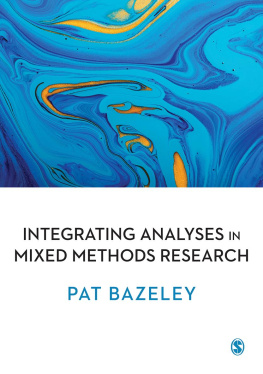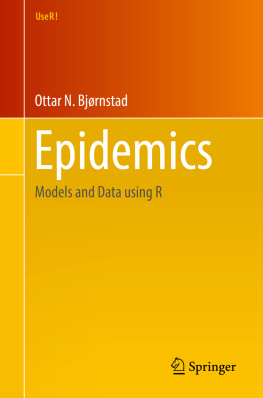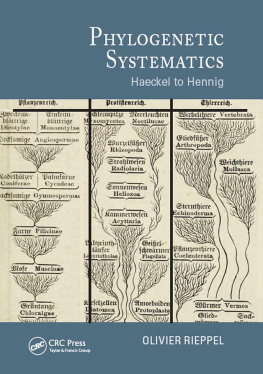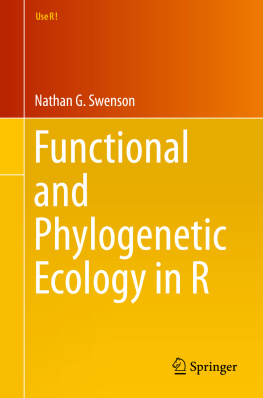Anthony R. Ives - Mixed and Phylogenetic Models: A Conceptual Introduction to Correlated Data
Here you can read online Anthony R. Ives - Mixed and Phylogenetic Models: A Conceptual Introduction to Correlated Data full text of the book (entire story) in english for free. Download pdf and epub, get meaning, cover and reviews about this ebook. year: 2018, publisher: leanpub.com, genre: Science. Description of the work, (preface) as well as reviews are available. Best literature library LitArk.com created for fans of good reading and offers a wide selection of genres:
Romance novel
Science fiction
Adventure
Detective
Science
History
Home and family
Prose
Art
Politics
Computer
Non-fiction
Religion
Business
Children
Humor
Choose a favorite category and find really read worthwhile books. Enjoy immersion in the world of imagination, feel the emotions of the characters or learn something new for yourself, make an fascinating discovery.

- Book:Mixed and Phylogenetic Models: A Conceptual Introduction to Correlated Data
- Author:
- Publisher:leanpub.com
- Genre:
- Year:2018
- Rating:3 / 5
- Favourites:Add to favourites
- Your mark:
- 60
- 1
- 2
- 3
- 4
- 5
Mixed and Phylogenetic Models: A Conceptual Introduction to Correlated Data: summary, description and annotation
We offer to read an annotation, description, summary or preface (depends on what the author of the book "Mixed and Phylogenetic Models: A Conceptual Introduction to Correlated Data" wrote himself). If you haven't found the necessary information about the book — write in the comments, we will try to find it.
Anthony R. Ives: author's other books
Who wrote Mixed and Phylogenetic Models: A Conceptual Introduction to Correlated Data? Find out the surname, the name of the author of the book and a list of all author's works by series.
Mixed and Phylogenetic Models: A Conceptual Introduction to Correlated Data — read online for free the complete book (whole text) full work
Below is the text of the book, divided by pages. System saving the place of the last page read, allows you to conveniently read the book "Mixed and Phylogenetic Models: A Conceptual Introduction to Correlated Data" online for free, without having to search again every time where you left off. Put a bookmark, and you can go to the page where you finished reading at any time.
Font size:
Interval:
Bookmark:

This book is for sale at http://leanpub.com/correlateddata
This version was published on 2018-08-14

* * * * *
This is a Leanpub book. Leanpub empowers authors and publishers with the Lean Publishing process. Lean Publishing is the act of publishing an in-progress ebook using lightweight tools and many iterations to get reader feedback, pivot until you have the right book and build traction once you do.
* * * * *
This book introduces the concepts behind statistical methods used to analyze data with correlated error structures. While correlated data arise in many ways, the focus is on ecological and evolutionary data, and two types of correlations: correlations generated by the hierarchical nature of the sampling (e.g., plots sampled within sites) and correlations generated by the phylogenetic relationships among species.
The book is integrated with R code that illustrates every point. Although it is possible to read the book without the code, or work through the code without the book, they are designed to go hand-in-hand. The R code comes with the complete downloadable package of the book on leanpub.com; if you have problems downloading it, please contact me.
Ive designed the book to be read in entirety, or at least for each chapter to be read in entirety. Therefore, it is not organized like a reference manual. However, because I dont expect everybody to read the whole thing, Ive tried to repeat some material between chapters, so that each chapter is more self-contained. Still, there might be places where you will want to consult another chapter, and Ive included pointers to sections in other chapters where appropriate.
The material covered in the book is:
Chapter 1, Multiple Methods for Analyzing Hierarchical Data
The first chapter introduces and analyzes a hierarchical dataset of ruffed grouse sampled at stations (plots) within roadway routes (sites). The relationship between the chances of observing a grouse at a station and wind speed during the observation is analyzed using nine methods including linear models (LMs), generalized linear models (GLMs), linear mixed models (LLMs), and generalized linear mixed models (GLMMs). The many methods of analyzing the same dataset begs the question of which is best.
Chapter 2, Good Statistical Properties
Which method is best depends on the question and the data, and it is not always the obvious one. Chapter 2 presents the statistical tools for deciding which method is best to analyze a correlated dataset. The chapter discusses properties of statistical estimators, such as bias and precision, and the characteristics of good hypothesis tests, specifically proper type I error control and high statistical power. This is a very fast overview of mathematical statistics and then application to the grouse dataset presented in Chapter 1.
Chapter 3, Phylogenetic Comparative Methods
There is a close relationship between hierarchical data and phylogenetic data, and the same approaches can be used for their analyses. Chapter 3 employs the tools presented in Chapter 2 to evaluate common methods applied in phylogenetic analyses used to compare among species or other phylogenetic units. I also show the not-so-nice consequences of ignoring the possible correlation generated by phylogenetic relationships among species.
Chapter 4, Phylogenetic Community Ecology
Community data have both hierarchical structure (e.g., samples taken from plots nested within sites) and phylogenetic structure (e.g., related species occurring more often in the same sites). Combining methods for analyzing hierarchical data and phylogenetic data produces Phylogenetic GLMMs (PGLMMs) that are useful in a broad class of ecological community studies. This chapter uses PGLMMs to investigate different types of questions about community structure, and assesses the properties of the models. This material is only covered very technically in the primary literature, and the R packages that can perform the analyses are just being developed. Therefore, the Chapter 4 could function as a manual for the phylogenetic community models discussed.
Downloading this book from leanpub.com
You can download this book for free at leanpub.com. If you have come across the book in some other way, could I ask you to get it from leanpub.com? This is for three reasons. First, the package you download from leanpub.com will contain the latest version of the R code. Second, leanpub.com will send out an email to people who have downloaded the book whenever I update it. Since the book is a work in progress, this might help you. Third, leanpub.com keeps track of the downloads, and the more there are, the more likely Ill update the book.
Background youll need
Although the book is titled an introduction, it is an introduction to the concepts behind the methods discussed, not so much the methods themselves. It assumes that you understand basic statistical concepts (such as random variables) and know R and how to run mixed and phylogenetic models. I think that in many cases, the best way of learning is by doing. On the other hand, there is no substitute for getting a good background in the basics of statistical analyses and R before launching off into the more complicated material in this book.
R Code
R code is provided for all analyses in the book. Ive pasted chunks of the code into the book, but Ive left out a lot of things like formatting details, creating plots, etc. I wanted the book to be useable while running the R code but also to be readable in its own right.
Exercises
For each chapter, I have exercises that ask you to modify the code that Ive presented to answer specific questions. All of the exercises have code for the answers that I have kept as a separate file in the downloadable R code. Im always interested in interesting exercises, so if you have suggestions, please let me know.
References
I have used references throughout the book very lightly, mainly to refer to very specific issues. Probably more useful are the general books below. These are books Ive used a lot, although Im sure there are other books just as good. Im interested in getting your recommendations for good books, so please let me know.
Efron B. and Tibshirani R. J.. 1993. An introduction to the bootstrap. Chapman and Hall, New York.
Gelman A. and Hill J. 2007. Data analysis using regression and multilevel/hierarchical models. Cambridge University Press, New York, NY.
Judge G. G., Griffiths W. E., Hill R. C., Lutkepohl H., and LeeT.-C. 1985. The theory and practice of econometrics. Second edition. John Wiley and Sons, New York.
Larsen R. J. and Marx M. L. 1981. An introduction to mathematical statistics and its applications. Prentice-Hall, Inc., Englewood Cliffs, N. J.
McCullagh P. and Nelder J. A. 1989. Generalized linear models. 2 edition. Chapman and Hall, London.
Neter J., Wasserman W., and Kutner M. H. 1989. Applied linear regression models. Richard D. Irwin, Inc., Homewood, IL.
Feedback
Please, I want and need your feedback. I wanted to self-publish this book, because it means I can update it quickly. I know it can be better than it is. I would appreciate it if you sent comments; email is the easiest way to get hold of me:
Font size:
Interval:
Bookmark:
Similar books «Mixed and Phylogenetic Models: A Conceptual Introduction to Correlated Data»
Look at similar books to Mixed and Phylogenetic Models: A Conceptual Introduction to Correlated Data. We have selected literature similar in name and meaning in the hope of providing readers with more options to find new, interesting, not yet read works.
Discussion, reviews of the book Mixed and Phylogenetic Models: A Conceptual Introduction to Correlated Data and just readers' own opinions. Leave your comments, write what you think about the work, its meaning or the main characters. Specify what exactly you liked and what you didn't like, and why you think so.









